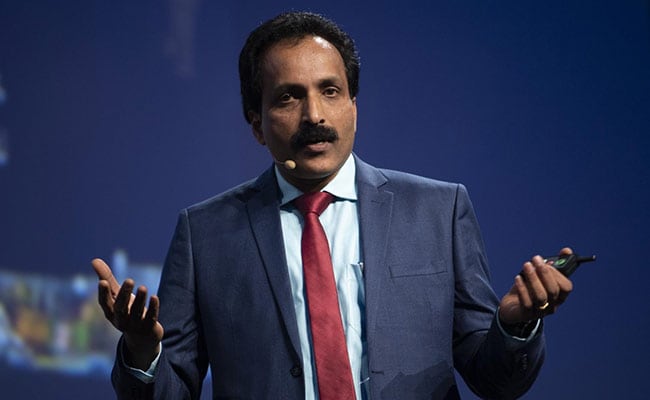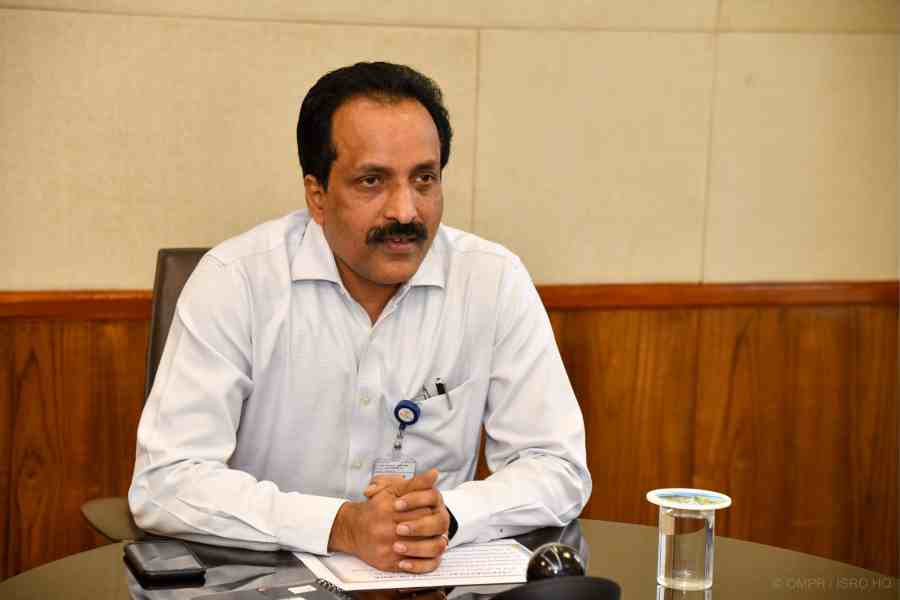‘I wanted to become doctor, picked engineering because…’: ISRO chief Dr S Somanath makes stunning revelations

‘I wanted to become doctor, picked engineering because…’: ISRO chief Dr S Somanath makes stunning revelations
Dr. S Somanath, a distinguished figure in the Indian Space Research Organisation (ISRO), has shared his inspiring journey from considering a career in medicine to ultimately choosing engineering, thereby leaving an indelible mark in the field of space technology and exploration.
Despite his initial inclination towards becoming a doctor, Dr. Somanath took a significant turn in his career path based on his father’s advice, ultimately opting for engineering. This decision, rooted in familial guidance, laid the foundation for his future achievements and contributions to the field of engineering and space research.

His academic excellence is evident from his accomplishments, including being awarded a Gold Medal in Engineering. Notably, his exceptional performance in high school biology, where he secured the top position at the state level, underscores his multidimensional academic prowess and aptitude for diverse fields of study.
Dr. S Somanath’s journey serves as an inspiration to many, highlighting the importance of making pivotal decisions and charting one’s course based on individual passions and aspirations. His successful transition from an initial interest in medicine to a thriving career in engineering and space research is a testament to the significance of perseverance, adaptability, and the pursuit of one’s true calling. As a prominent figure in ISRO, Dr. S Somanath continues to contribute to India’s advancements in space technology, embodying the spirit of dedication and excellence in the pursuit of scientific innovation and exploration.

Dr. S Somanath’s address to the gathering of aspiring medical professionals at the Tamil Nadu Dr MGR University in Chennai sheds light on the pivotal role played by his father in steering his career path away from medicine towards the field of Engineering or Mathematics.
His revelation about his academic achievements in Kerala, where he secured the top position in Biology, underscores his early passion and potential for a career in the medical field. However, his father, being a teacher and presumably aware of the challenges within the medical profession, encouraged him to pursue a different academic trajectory, emphasizing the demanding nature of the medical field and suggesting Engineering or Mathematics as viable alternatives.

Dr. S Somanath’s personal experience serves as a source of inspiration and guidance for the budding doctors in attendance, emphasizing the importance of receiving valuable counsel and making informed decisions about one’s academic and professional pursuits. His narrative highlights the significance of parental guidance in shaping the career choices of individuals and underscores the critical role of mentorship in nurturing young talents and guiding them towards paths that align with their skills, interests, and aspirations.
As an accomplished figure in the field of engineering and space research, Dr. Somanath’s journey serves as a testament to the power of making informed decisions and pursuing one’s passions with dedication and perseverance.
Dr. S Somanath’s recollection of his father’s advice, emphasizing the potential of Engineering or Mathematics in leading to a career as a Teacher or Professor, underscores the diverse opportunities available within the academic realm. This guidance highlights the versatility of these fields and their potential to contribute to the educational landscape, shaping future generations of students and professionals.

Furthermore, Dr. Somanath’s address to the students at the Tamil Nadu Dr MGR University in Chennai accentuated the interconnectedness between the medical and space domains. He emphasized the collaborative efforts between ISRO scientists and medical professionals, particularly in the context of the Gaganyaan astronaut programme. This observation underscores the interdisciplinary nature of space research and the crucial role played by medical expertise in ensuring the success and well-being of astronauts involved in space missions.
Dr. Somanath’s insights shed light on the intricate web of knowledge exchange and collaboration that exists between diverse fields, emphasizing the importance of interdisciplinary approaches in tackling complex scientific challenges. His address serves as an inspiration to students, highlighting the significance of cross-disciplinary collaboration and the limitless possibilities that emerge from the integration of various domains of knowledge, ultimately contributing to advancements in space research and exploration.
Dr. S Somanath, the chairman of ISRO, has underscored the significance of integrating software and artificial intelligence (AI) tools into the medical domain, emphasizing their potential to enhance healthcare services for the benefit of the general populace. His call for medical professionals to acquire knowledge in these areas reflects the increasing role of technology in revolutionizing the healthcare sector and improving patient care.
Moreover, Dr. Somanath’s intriguing vision of a future where embedded medicinal kits can be utilized within the human body highlights the potential for groundbreaking advancements in medical science. The concept of targeted drug delivery to specific sites within the body, made possible through technological innovations, signifies a paradigm shift in the way healthcare solutions are conceptualized and implemented. This futuristic perspective not only points to the possibilities of more precise and effective medical treatments but also underscores the role of technological integration in shaping the future of healthcare.
Dr. S Somanath’s insights serve as a catalyst for encouraging further collaboration between the fields of medicine and technology, fostering the development of innovative solutions that have the potential to revolutionize healthcare delivery and significantly improve the overall well-being of individuals. By emphasizing the importance of technological proficiency in the medical profession, he underscores the need for continuous learning and adaptation to keep pace with the evolving landscape of healthcare and technology integration.
Dr. S Somanath’s contemplation on the prospect of extending human life without the constraints of aging underscores the fascinating intersection between scientific exploration and the realms of human health and longevity. His remarks reflect a profound consideration of the challenges and possibilities that lie ahead in the fields of medical science and space exploration.
By drawing parallels between the longevity of spacecraft and the potential extension of human life, Dr. Somanath highlights the pressing need for innovative solutions that could potentially enable humans to explore and inhabit distant celestial bodies over extended periods. His inquiry into the concept of pausing and resuming human life, reminiscent of themes often explored in science fiction, stimulates critical discourse on the boundaries of medical and technological advancements and their implications for human existence in space exploration.
Furthermore, his emphasis on the pivotal role of medical professionals in sustaining human colonies on other planets underscores the vital importance of healthcare expertise in facilitating long-term space missions and eventual colonization endeavors. Dr. Somanath’s visionary outlook encourages interdisciplinary collaboration between the fields of space exploration, medical science, and technology, paving the way for innovative research and development initiatives aimed at ensuring the well-being and sustenance of human life in the vast expanse of the cosmos.




